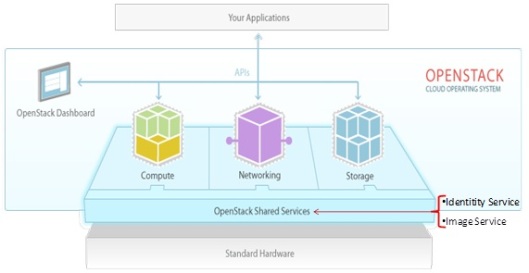The “Folsom” version of OpenStack
is going to be delivered today. It’s the community’s sixth release.
Openstack was initially launched in July of 2010 by Rackspace Hosting
and NASA and to date has attracted more than 150 backers including Red
Hat and SUSE, IBM, Dell, HP and even VMware.
The previous version (“Essex”) of
OpenStack was released in April of 2012 with “Nova” Compute, “Horizon”
Dashboard, “Glance” imaging, “Swift” Object Store and “Keystone”
Identity services.
Maybe, the most anticipated new feature
of the next OpenStack release are the new network services known as
“Quantum,” which controls network virtualization, and "Cinder", formerly
known as nova-volume and now developed independently of Nova (Compute)
itself, which becomes a volume service and provides persistent block
storage (volumes) to guest VMs, opening support for traditional SAN and
NAS besides of the usual players (EMC, NetApp, and Nexenta).
So the picture is the following:
In words, currently there are seven
core components of OpenStack: Compute, Network, Object Storage, Block Storage, Dashboard, Identity, and Image Service, and here is a
reminder of them:
- Compute (codenamed “Nova”) provides virtual servers upon demand. Big companies as Rackspace and HP provide commercial compute services built on Nova, but also other as Tissat. Besides, it is used internally at companies like Mercado Libre and NASA (where it originated).
- Network (codenamed “Quantum”) provides “network connectivity as a service” between interface devices managed by other OpenStack services (most likely Nova). The service works by allowing users to create their own networks and then attach interfaces to them. Quantum has a pluggable architecture to support many popular networking vendors and technologies. Quantum is new in the Folsom release.
- Object Store (codenamed “Swift”) allows you to store or retrieve files (but not mount directories like a fileserver). Several companies provide commercial storage services based on Swift. These include KT, Rackspace (from which Swift originated) Internap and Tissat. Swift is also used internally at many large companies to store their data.
- Block Storage (codenamed “Cinder”) provides persistent block storage to guest VMs. This project was born from code originally in Nova (the nova-volume service described below). Please note that this is block storage (or volumes) not filesystems like NFS or CIFS share. Cinder is new for the Folsom release.
- Dashboard (codenamed “Horizon”) provides a modular web-based user interface for all the OpenStack services. With this web GUI, you can perform most operations on your cloud like launching an instance, assigning IP addresses and setting access controls.
- Image (codenamed “Glance”) provides a catalog and repository for virtual disk images. These disk images are mostly commonly used in OpenStack Compute. While this service is technically optional, any cloud of size will require it.
- Identity (codenamed “Keystone”) provides authentication and authorization for all the OpenStack services. It also provides a service catalog of services within a particular OpenStack cloud.
Coming back the real new component (since
Cinder was previously part of Nova, tough this doesn’t mean that it
wasn’t a great improvement), Quantum provides support for SDN,
Sofware Defined networking: it has got a feature-rich and extensible API
for programmatically defining networks. This allows for far richer
network topologies to be defined, and more advanced configurations at
the backend or implementing QoS and security functions. Quantum gives
users of OpenStack the ability to control all aspects of their cloud
compute environment, without compromising the underlying infrastructure
and security of the underlying OpenStack environment; in summary, Quantum
brings true multi-tenancy without any restrictions of VLANs.
Of course other important new features
has been added in the already existing components (for example, the
coming back of support for Microsoft’s hypervisor, Hyper-V, removed in
Essex version).

No hay comentarios:
Publicar un comentario